Before I became pregnant, folate wasn’t a top priority—and for many, that’s often the case. Folate tends to fly under the radar up until pregnancy. It’s only then that healthcare practitioners emphasize the importance of folate (and its cousin, folic acid). After all, folate and folic acid support a growing baby’s brain and spinal cord. More on that, below. At any rate, folate is essential. Beyond its necessity for pregnancy, we need folate on a daily basis. So, let’s take a closer look at folate, what it is, why we need it, and the powerhouse foods high in folate so we can get more of it.
Featured image from our interview with Megan O’Neill by Belathée Photography.

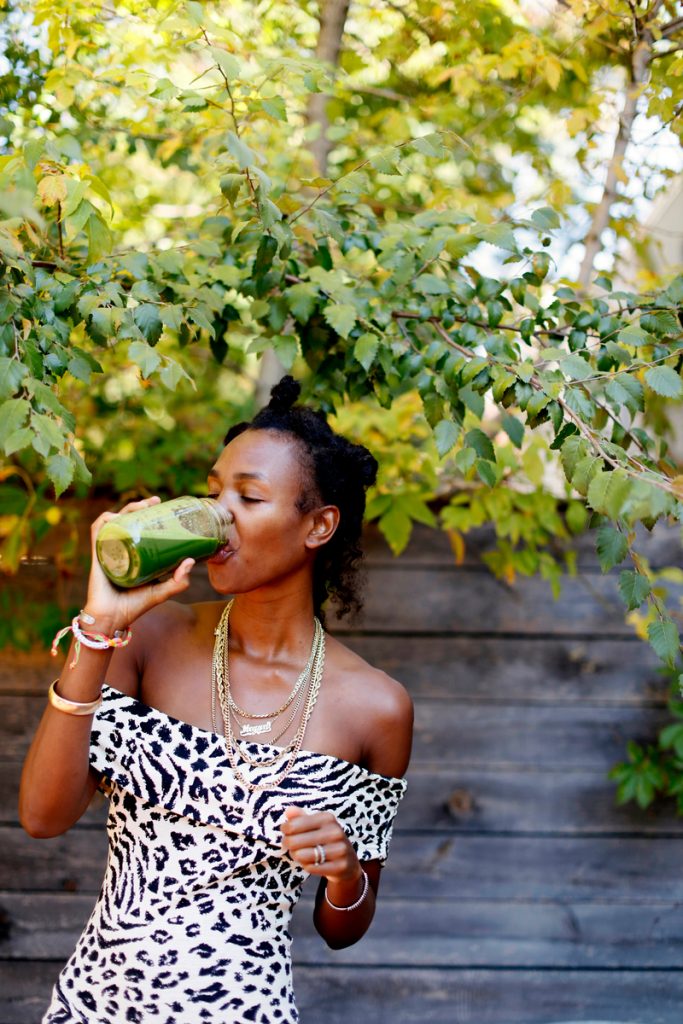

What is folate and why do I need it?
Folate is the natural form of vitamin B9. It’s found in food. A water-soluble vitamin, it has many important functions in the body. In particular, it supports proper fetal growth, reduces the risk of birth defects, and aids in healthy red blood cell division. Folate helps form DNA, RNA, and is involved in protein metabolism. It plays a key role in breaking down homocysteine, an amino acid that can be harmful in disproportionate amounts. In essence, your body needs folate to make DNA and other genetic material.
The Best Folate Food Sources
Folate, aka vitamin B9, is naturally found in many foods—both plant-based and animal-derived. For example, folate is present in dark, leafy green vegetables, legumes, beans, and nuts. Fruits rich in folate include oranges, lemons, bananas, melons, and strawberries. A type of folate is also found in the form of man-made foods, like cereals, pasta, and supplements. This is where folic acid comes into play.


How much folate do I need?
The amount of folate you need depends on your age. It also depends on whether or not you’re trying to conceive (or are pregnant). If you’re over 19 years old, you should aim for 400 mcg DFE. However, pregnant and lactating women require 600 mcg DFE and 500 mcg DFE, respectively. Additionally, those who regularly drink alcohol should aim for at least 600 mcg DFE of folate. Their needs are slightly higher as alcohol can impair folate’s absorption. As always, consult with your physician about your body’s needs.
For a bit of context, the Recommended Dietary Allowance for folate is listed as micrograms of Dietary Folate Equivalents (DFE). And folate equivalents refers to both folate and folic acid. In essence, the measure of mcg DFE is used because your body absorbs more folic acid from fortified foods and dietary supplements than folate found naturally in foods. In comparison to folate, you actually need less folic acid to get your recommended amount. To put that into perspective, 400 mcg of folate and 240 mcg of folic acid are both equal to 400 mcg DFE. Capiche?
Signs of Folate Deficiency
Folate deficiency is often called “folate deficiency anemia (or folic acid deficiency),” and it’s caused by a lack of dietary folate. It means you have lower-than-normal amounts of folic acid, a type of B vitamin, in your blood. How does it happen? A few ways: If you have an unbalanced and unhealthy diet, regularly misuse alcohol, and/or follow a fad diet that does not involve eating good sources of folate. Luckily, it is treatable by a medical professional and typically resolves itself within one month. The symptoms of folate deficiency are often subtle, but they include:
- Fatigue
- Tongue swelling
- Mouth sores
- Fatigue
- Premature gray hair
- Growth issues


Health Effects of Low Folate
Although studies are still undergoing, current research shows that low levels of folate can cause the following:
- Neural tube defects. Taking folic acid (and consuming folate) before becoming pregnant and during early pregnancy helps prevent neural tube defects in babies. Neural tube defects are major birth defects in a baby’s brain or spine.
- Cancer. Folate that is naturally present in food may decrease the risk of several forms of cancer. But folate supplements might have different effects on cancer risk depending on how much the person takes and when. More research is needed to understand the roles of dietary folate and folic acid supplements in cancer risk.
- Depression. People with low blood levels of folate might be more likely to have depression. In addition, they might not respond as well to antidepressant treatment as people with normal folate levels. Folate supplements, particularly those that contain methylfolate (5-methyl-THF), might make antidepressant medications more effective. However, more research is needed to better understand the role of folate in depression.
- Heart disease and stroke. Folic acid supplements lower levels of homocysteine, an amino acid in the blood that’s linked to a higher risk of cardiovascular disease. Supplements don’t directly decrease the risk of heart disease, but some studies have shown that a combination of folic acid with other B-vitamins helps prevent stroke.
- Preterm birth. Taking folic acid might reduce the risk of having a premature baby or a baby with birth defects, such as certain types of heart problems. But more research is needed to understand how folic acid affects the risk of these conditions.


Folate for a Healthy Pregnancy
As mentioned, folate and folic acid are important for pregnancy because they can help prevent birth defects, such as spina bifida. Furthermore, folate prevents certain heart abnormalities, cleft palate, and cleft lip. It also lowers the risk of developing anemia, miscarriage, preterm delivery, and low birth weight. Folate is available in multivitamins and prenatal vitamins, an important part of pre-conception and the entirety of pregnancy. In fact, folate is essential for breastfeeding moms, too.
In dietary supplements, folate is usually in the form of folic acid, but methylfolate (5-methyl-THF) is also used. Dietary supplements containing methylfolate might be better than folic acid for individuals who have a certain mutation in a gene called MTHFR. With that particular gene mutation, bodies can use this methylfolate more easily than folic acid. If you are trying to get pregnant, consider getting your genes tested to determine if you have the MTHFR genetic variation. This will give you the power to make informed choices about your unique nutritional needs, including whether or not you should choose prenatal and fertility supplements that contain the active, methylfolate form of folic acid.
The Difference Between Folate and Folic Acid
Often used interchangeably, folate and folic acid are two different compounds. Folic acid is the synthetic form of folate. Available as a nutritional supplement, folic acid is the lab-made form of folate (vitamin B9). As mentioned, both folate and folic acid are necessary for making and maintaining healthy cells in the body. Some prenatal vitamins contain folate and most contain folic acid. At any rate, they’re an essential component of prenatal vitamins.
In terms of which is better, typically dietary folate is a safer option than folic acid. After all, excessive unmetabolized folic acid can cause several health issues. Nonetheless, if your doctor has prescribed folic acid for certain health conditions, that’s likely because your body may not be met by dietary folate alone.

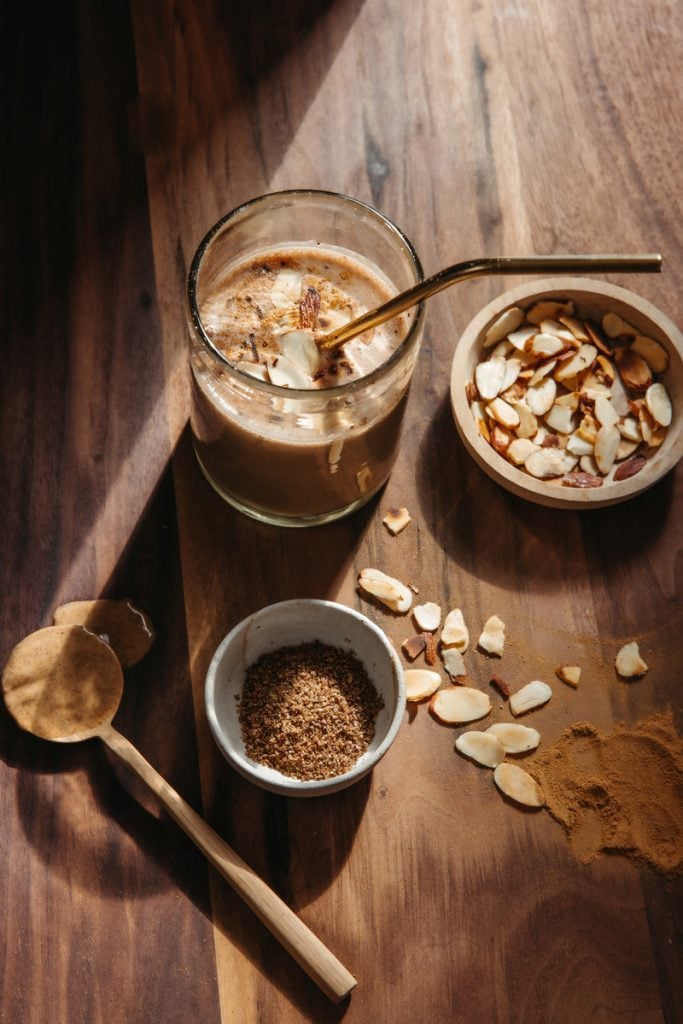
15 Foods High in Folate
If you’re eating a wide variety of plant and/or animal-based foods, you’re likely getting enough folate. Folate is naturally present in many ingredients, including vegetables, fruits, nuts, beans, peas, seafood, eggs, dairy products, meat, poultry, and grains. Spinach, liver, and asparagus are among the foods with the highest folate levels.
Back in 1998, the U.S. Food and Drug Administration began requiring manufacturers to add 140 mcg folic acid/100 g to enriched breads, cereals, flours, pastas, rice, and other grain products. This was, in part, to reduce the risk of neural tube defects. Because cereals and grains are widely consumed in America, these products have become important contributors of folic acid to the American diet. Beyond processed foods, these are 15 whole foods high in folate:
- Avocados
- Asparagus
- Bananas
- Beets
- Broccoli
- Brussels sprouts
- Eggs
- Flaxseeds
- Lentils
- Okra
- Oranges
- Papaya
- Spinach
- Walnuts
- Wheat germ
The Best Recipes That Feature Foods High in Folate

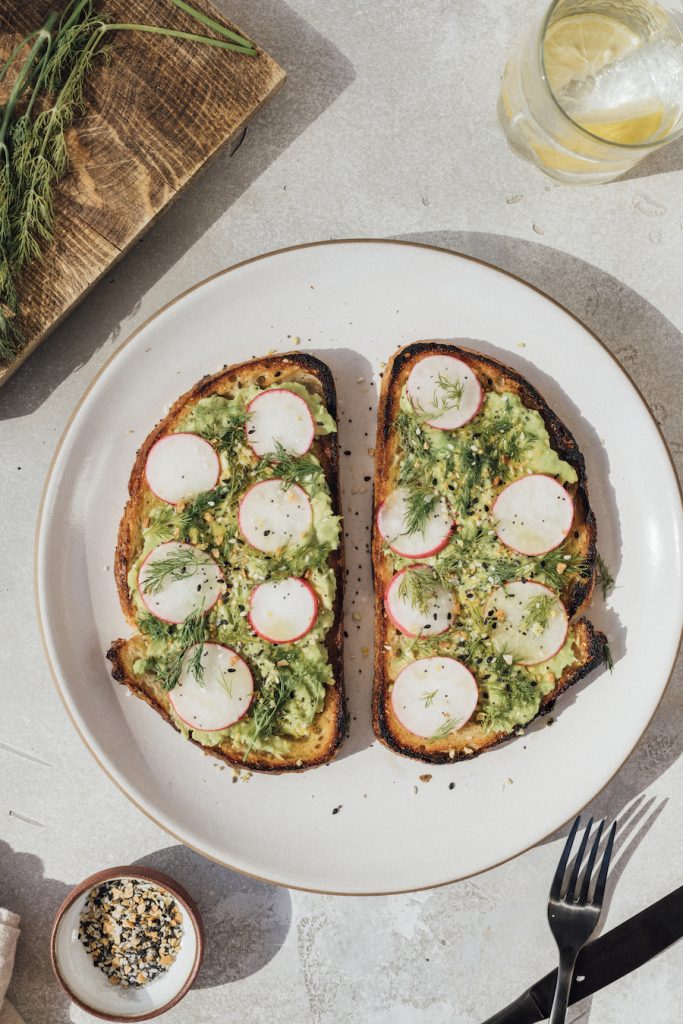
Avocado Toast with Kale Pesto and Crunchy Veggies
Bright and delicious, this avocado toast is packed with fresh herbs, creamy avocado, and nutritional yeast for a totally healthy and plant-based sauce. One-half of a raw avocado contains 82 mcg of folate or about 21% of the amount you need for the entire day.


Grilled Peach and Asparagus Salad with Spicy Pepitas, Cashew Mozzarella, and Goji Chipotle Dressing
Asparagus is one of our favorite spring veggies—and this dish just happens to be our favorite way to get our fill. Even non-asparagus fans love this recipe. It’s delicious alongside roasted or grilled chicken, fish, or veggie-packed pasta. A half-cup (90-gram) serving of cooked asparagus contains about 134 mcg of folate or 34% of the DV.


Vegan Nutty Banana Muffins
Name a better breakfast than quick, easy, on-the-go muffins. This vegan take is packed with healthy fats thanks to olive oil, tahini, and almond flour. What’s more, it’s also freezer-friendly and naturally sweetened for the perfect morning meal. Add chocolate chips to make them extra special. Plus, one medium banana can supply 23.6 mcg of folate, or 6% of the DV.


Smoky Beet & Strawberry Salad with Gorgonzola
A vibrantly pink dish, this sweet and savory salad is super simple to make and can be served alongside any of your favorite spring mains. The addition of a roasted beet adds a touch of sweet earthiness to the sweet strawberries and creamy gorgonzola. Beets are high in nitrates and folate and a cup (136 grams) of raw beets contains 37% of your DV for folate.

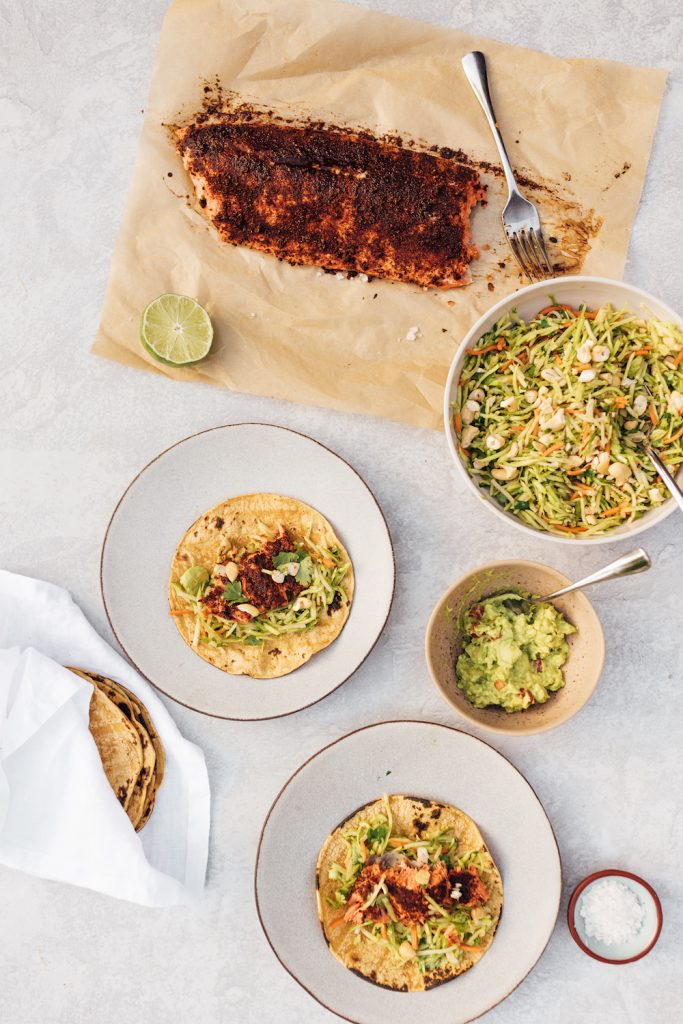
Chili-Rubbed Salmon With Cashew-Broccoli Slaw
These salmon tacos are a prime example of how simple ingredients can create a healthy, delicious, and easy-to-prepare weeknight dinner. Not to mention they get bonus points for being gluten and dairy-free and are packed with nourishing, plant-based ingredients. Broccoli, especially when cooked, is rich in folate. One cup (91 grams) of raw broccoli provides 14% of the DV, while one-half cup (78 grams) of cooked broccoli can supply 21% of your daily needs.

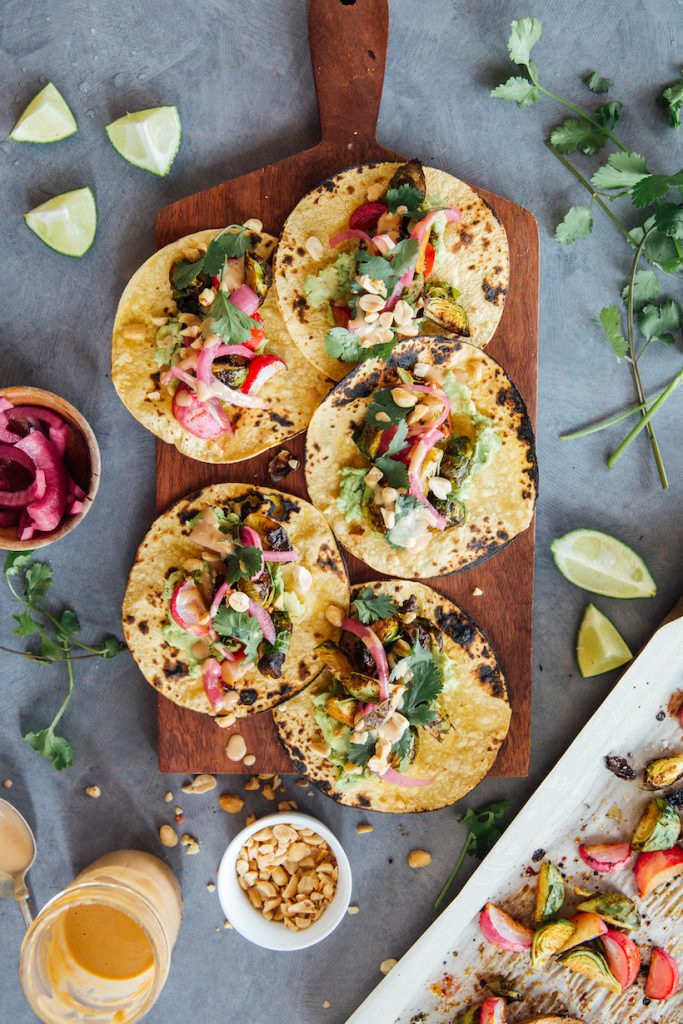
Spicy Peanut Brussels Sprout Tacos
It’s taco season, y’all! And truly, is there any better way to celebrate than with these light, flavorful, and plant-based tacos? The star of the show, Brussels sprouts, contains a good number of antioxidants and micronutrients. One-half cup (78 grams) of cooked Brussels sprouts provides about 12% of the DV for folate.


Spring Rice Salad
Your search for a vibrant and filling spring grain salad is over. With perfectly-seasoned rice, peas, fresh herbs, avocado, pickled shallots, and eggs for extra protein, it’s an easy dish that’ll quickly become your lunchtime go-to. Adding eggs to your diet is a great way to boost your intake of several essential nutrients, including folate. One large egg packs 22 mcg of folate, or approximately 6% of the DV.

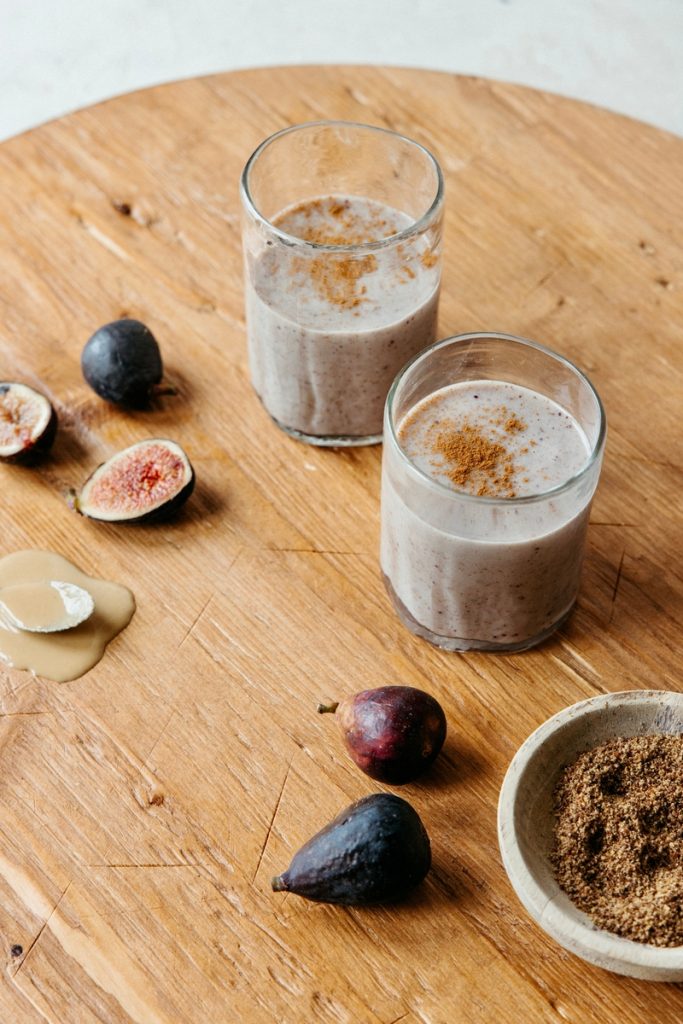
Get Figgy With It Smoothie
Blend up this refreshing fig and flaxseed superfood smoothie for breakfast during the week. It is fiber-packed from the flaxseed, filling from the vanilla protein powder, and perfectly sweet from the banana and figs. One ounce of flaxseeds contains about 24 mcg of folate or 6% of the DV.

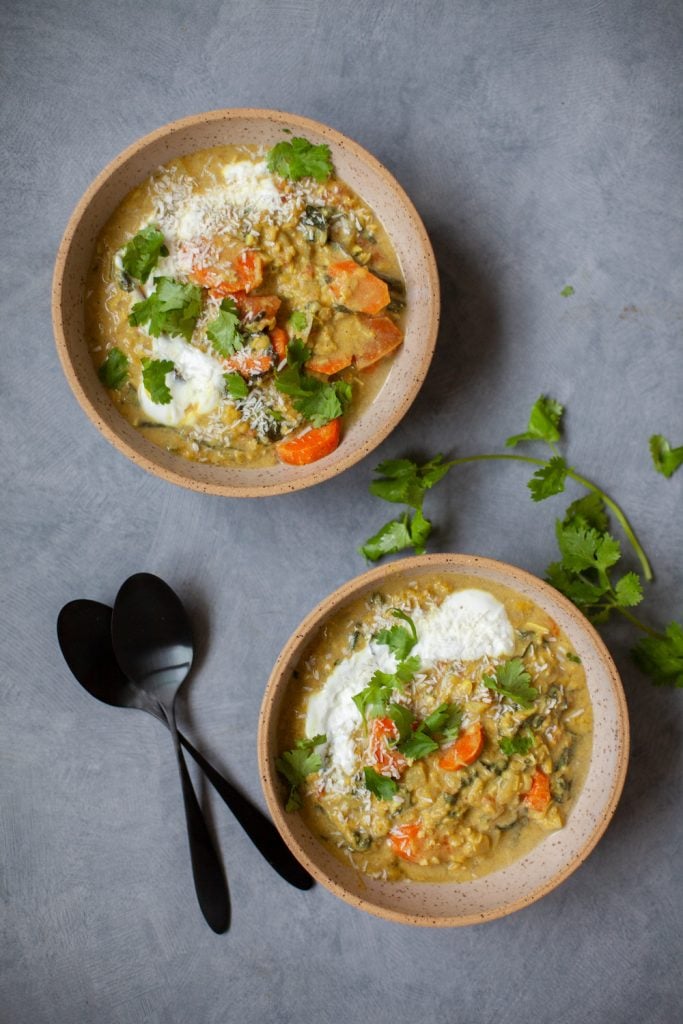
Coconut Curry Red Lentil Soup
This soup is made completely in one pot, so clean-up is a breeze. Prep it on a Sunday so it can be quickly rewarmed for an effortless dinner during the week. It’s hearty, comforting, and satiating—the best of all worlds. Although the exact amount of folate in legumes can vary, they’re an excellent source of folate. One cup (198 grams) of cooked lentils contains 358 mcg of folate, which is 90% of the DV.


Thai Chicken Soup with Butternut Squash & Bok Choy
If you haven’t yet dipped your toes into the delicious world of okra, this Thai-inspired chicken soup is a great place to start. It’s packed with protein, flavor, and plenty of veggies. And can we talk about all that color? One cup of cooked okra contains 74 mcg of folate.


Orange Juice Wellness Elixir
Although winter’s on its way out, I’ve been known to sip on this elixir well into spring. (I just can’t seem to quit my cold!) Thankfully, this orange juice beverage is so, so simple yet totally delish. Besides their popular flavor, oranges pack a big nutritional punch. We all know oranges are high in vitamin C—they’re the go-to fruit when you want to support your immune system. However, they’re also a good source of fiber and folate. Just one large orange contains 55 mcg of folate, or about 14% of the DV.

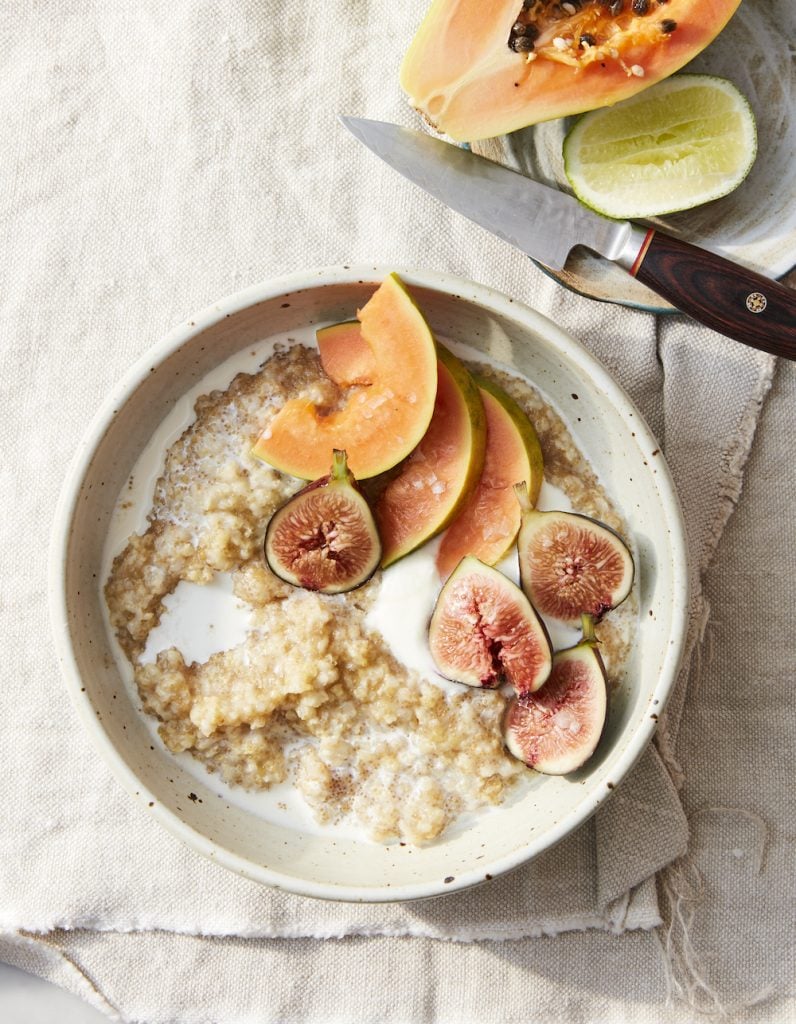
Millet and Amaranth Porridge with Figs and Papaya
This healthy papaya porridge bowl recipe makes for a comforting, yet perfect-for-spring, breakfast. It’s so easy to make and loaded with energizing and refreshing ingredients. Along with vitamin C and antioxidants, one cup (140 grams) of raw papaya contains 53 mcg of folate, which is equal to about 13% of the DV.

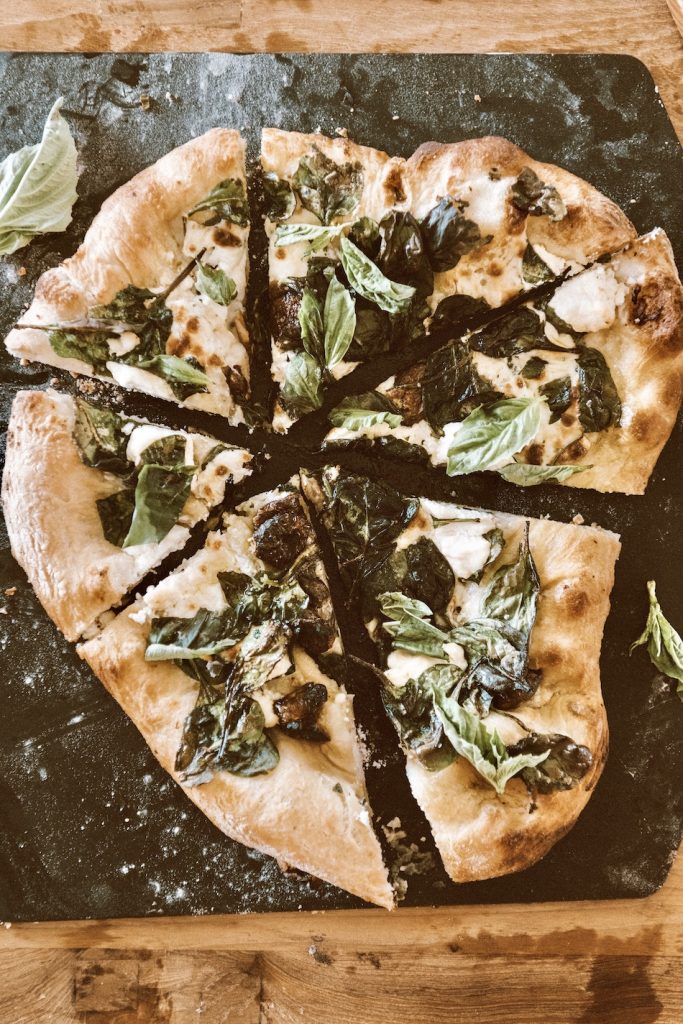
Spinach and Ricotta Pizza with Garlicky Olive Oil
A healthy, budget-friendly meal that’s full of flavor, packed with protein, and just happens to be kid-friendly? Sign me up. Though it sounds fancy, this is one of the easiest pizzas to make with just a few ingredients. Leafy green vegetables such as spinach, kale, and arugula are rich in vitamins and minerals, including folate. One cup (30 grams) of raw spinach provides 58.2 mcg, or 15% of the DV.

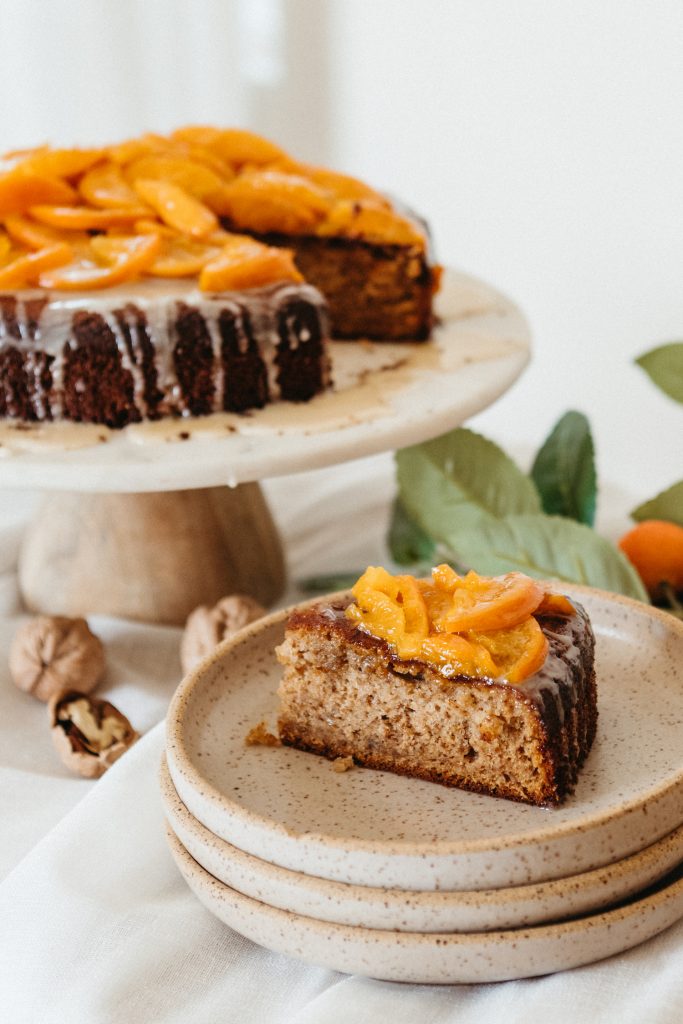
Orange-Walnut Olive Oil Cake
Proof that you can have your cake and eat it, too! This walnut, orange, and olive oil cake is going to be your next sweet-treat home run. It’s full of earthy flavors and is even easy enough to surprise the fam with on a weeknight. Thanks to the walnuts, this recipe is packed with folate. One ounce (28 grams) of walnuts contains about 28 mcg of folate.


Chocolate Chip Wheat Germ Cookies from Beyond Kimchee
These chocolate chip wheat germ cookies are irresistibly crisp on the outside and chewy on the inside. They are a wholesome yet indulgent treat. Just one ounce (28 grams) of wheat germ provides 78.7 mcg of folate, which equals about 20% of your daily folate needs. Wheat germ also contains a substantial amount of fiber.





